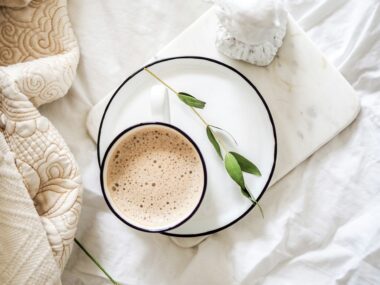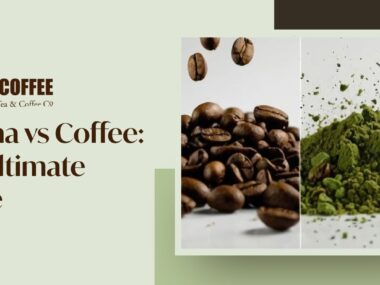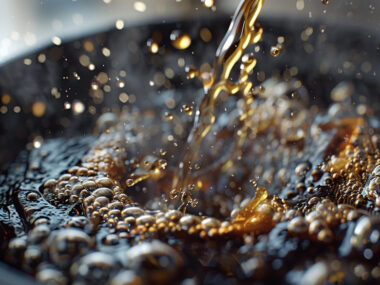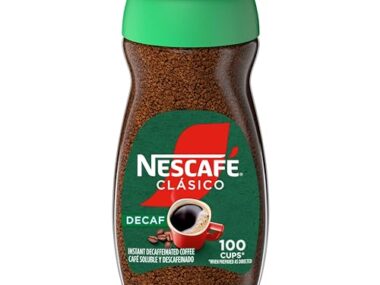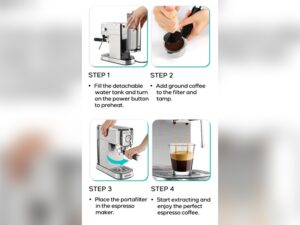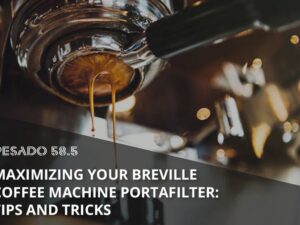Are you looking for a coffee that gives you the biggest boost? Knowing which coffee has the most caffeine can change the way you start your day.
Whether you need to power through a tough morning or stay alert during long hours, choosing the right coffee matters. You’ll discover which coffee packs the strongest punch and how to get the most out of your cup. Keep reading to fuel your energy like never before!

Credit: www.coracaoconfections.com
Types Of Coffee Beans
Coffee beans are the seeds of the coffee plant. Their type affects the flavor and caffeine content of the coffee. Understanding the main types helps you choose the right coffee for your caffeine needs.
Two main types of coffee beans dominate the market. Each has unique features that impact taste and caffeine levels. The most common types are Arabica and Robusta.
Arabica Vs Robusta
Arabica beans come from the Coffea arabica plant. They have a smoother, sweeter taste with hints of fruit and sugar. Arabica beans grow at higher altitudes and require cooler climates. They make up about 60-70% of the world’s coffee supply.
Robusta beans come from the Coffea canephora plant. They have a stronger, harsher flavor, often described as earthy or bitter. Robusta plants grow at lower altitudes and are easier to cultivate. These beans contain almost twice as much caffeine as Arabica beans.
Impact On Caffeine Levels
Caffeine content varies mainly between Arabica and Robusta beans. Arabica beans contain about 1.2% caffeine by weight. Robusta beans contain about 2.2% caffeine by weight. This makes Robusta the choice for those who want a stronger caffeine kick.
The roasting process also affects caffeine levels. Dark roasts lose some caffeine during roasting. Light roasts retain more caffeine. But bean type has a bigger impact than roast level.

Credit: www.youtube.com
Brewing Methods And Caffeine
Brewing methods affect the caffeine levels in your coffee. The way you brew changes how much caffeine ends up in your cup. Different methods extract caffeine at different speeds and temperatures. This means some coffee types have more caffeine than others. Understanding these methods helps you pick the right coffee for your needs.
Espresso
Espresso uses high pressure and hot water. It extracts caffeine quickly from finely ground beans. A single shot has less caffeine than drip coffee by volume. But espresso is very concentrated. A small cup delivers a strong caffeine punch.
Drip Coffee
Drip coffee uses medium ground beans. Hot water slowly drips through the coffee grounds. This method extracts caffeine evenly. A standard cup of drip coffee usually has more caffeine than espresso. It depends on the coffee-to-water ratio and brewing time.
French Press
French press uses coarse grounds and steeping. Coffee soaks in hot water for several minutes. This method extracts a good amount of caffeine. French press coffee tends to be strong and full-bodied. The longer the steep, the more caffeine it has.
Cold Brew
Cold brew uses cold water and long steeping times. It takes 12 to 24 hours to brew. This slow method extracts caffeine gently. Cold brew coffee often has more caffeine per cup. It is smooth and less acidic than hot brewed coffee.
Caffeine Content By Coffee Type
Caffeine levels vary widely among different coffee types. Knowing which coffee has more caffeine helps you choose the right one for your needs. Some coffees offer a quick boost, while others provide a milder effect. Understanding caffeine content by coffee type guides your selection.
Instant Coffee
Instant coffee usually contains less caffeine than brewed coffee. A typical cup has about 30 to 90 mg of caffeine. It is quick to make and convenient for busy mornings. The caffeine amount depends on the brand and serving size.
Decaf Coffee
Decaf coffee is not completely caffeine-free. It has about 2 to 5 mg of caffeine per cup. Decaf is perfect for those avoiding caffeine but still wanting coffee taste. It offers a gentle lift without strong stimulation.
Specialty Coffees
Specialty coffees, like espresso and cold brew, contain more caffeine. Espresso has about 63 mg per shot but is served in small amounts. Cold brew often contains more caffeine due to longer brewing time. These coffees suit people needing a stronger caffeine punch.
Factors Affecting Caffeine Strength
Caffeine strength in coffee depends on several key factors. These influence how much caffeine ends up in your cup. Understanding these can help you choose the coffee with the most caffeine. Let’s explore the main elements that affect caffeine content.
Roast Level
Roast level changes the caffeine amount in coffee beans. Light roasts keep more caffeine than dark roasts. Dark roasting burns some caffeine away. So, lighter roasts usually have stronger caffeine power.
Grind Size
The size of the coffee grind affects caffeine extraction. Fine grounds release caffeine faster than coarse ones. Finer grind means stronger coffee and more caffeine in each sip. Coarser grind extracts less caffeine during brewing.
Serving Size
Serving size directly impacts total caffeine intake. Larger cups contain more coffee and more caffeine. Small cups have less caffeine simply due to less volume. Always check the serving size to know caffeine strength.
Strongest Coffee Brands
Strong coffee brands attract those who need a powerful caffeine boost. These brands use special beans and roasting methods. They deliver intense flavors and high caffeine content. Choosing the right brand depends on your caffeine needs and taste preferences.
Popular High-caffeine Brands
Death Wish Coffee is famous for its high caffeine levels. It uses robusta beans known for more caffeine. Black Insomnia Coffee claims to be the strongest coffee worldwide. Its bold taste comes with a caffeine kick. Devil Mountain Coffee also ranks high in caffeine content. These brands suit people needing extra energy quickly.
How To Choose
Look at the caffeine content per serving first. Some brands list exact milligrams on their packaging. Consider the roast type; darker roasts often have less caffeine. Robusta beans have more caffeine than arabica beans. Choose a brand that fits your flavor and strength preferences. Start with small amounts to test tolerance. Strong coffee can cause jitters if taken in excess.
Health Effects Of High Caffeine Intake
High caffeine intake affects the body in many ways. Some effects help boost energy and focus. Others might cause issues if caffeine is consumed too much. Understanding these effects helps you enjoy coffee safely.
Benefits
Caffeine can increase alertness and improve concentration. It helps reduce tiredness and makes you feel awake. Some studies show caffeine may improve memory and mood. It can also boost physical performance during exercise. Moderate caffeine can support a healthy metabolism.
Risks
Too much caffeine can cause anxiety and restlessness. It may lead to trouble sleeping or insomnia. High caffeine intake can increase heart rate and blood pressure. Some people experience stomach upset or nausea. Over time, it might cause dependency or withdrawal symptoms.
Tips For Brewing The Strongest Coffee
Brewing the strongest coffee starts with smart choices and clear steps. The right beans and brewing methods make a big difference. Small changes in the process can raise caffeine levels significantly. Understanding these tips helps you enjoy a bold, rich cup every time.
Bean Selection
Choose beans with naturally high caffeine content. Robusta beans have more caffeine than Arabica beans. Dark roast beans taste stronger but have less caffeine than light roast. Pick fresh, whole beans for the best flavor and caffeine boost. Avoid pre-ground coffee, as it loses potency quickly.
Brewing Techniques
Use more coffee grounds for a stronger brew. Fine grind increases surface area and caffeine extraction. Brew time matters: longer brewing extracts more caffeine. Hot water near boiling point helps extract caffeine well. Press coffee makers and espresso machines tend to produce stronger coffee. Avoid over-diluting with water or milk to keep caffeine levels high.

Credit: coffeekev.com
Frequently Asked Questions
Which Coffee Type Contains The Most Caffeine?
Espresso generally has the highest caffeine concentration per ounce. However, brewed coffee contains more caffeine per typical serving due to larger volume. Instant coffee has less caffeine compared to espresso and brewed types.
Does Dark Roast Coffee Have More Caffeine?
Dark roast coffee has slightly less caffeine than light roast. Roasting reduces caffeine content minimally. Caffeine difference between roasts is negligible in regular servings.
How Does Brewing Method Affect Caffeine Content?
Brewing methods like drip coffee extract more caffeine than espresso. Longer brew times increase caffeine extraction. Cold brew coffee typically has higher caffeine due to extended steeping.
Is Decaf Coffee Caffeine-free?
Decaf coffee contains very little caffeine, not zero. It usually has about 2-5 mg caffeine per cup, compared to 70-140 mg in regular coffee.
Conclusion
Strong coffee means more caffeine, but type and brew matter. Espresso packs a punch in a small cup. Drip coffee gives caffeine in larger amounts due to volume. Dark roasts taste stronger but have less caffeine than light roasts. Choose coffee based on your caffeine needs and taste.
Now you know which coffee wakes you up best. Enjoy your perfect cup with confidence!
